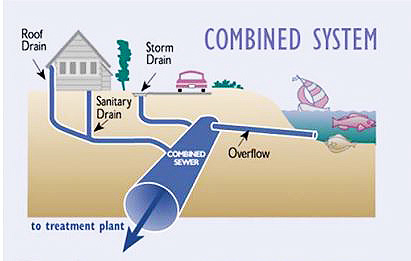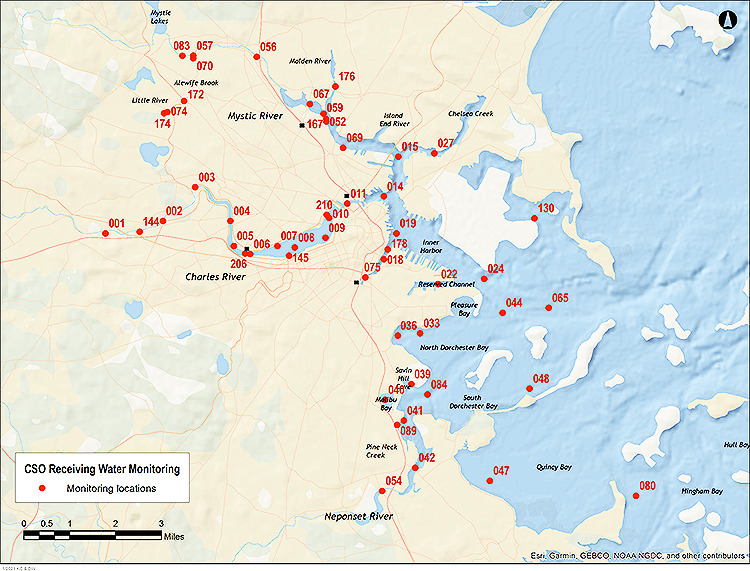| Home |
| Water System |
| Sewer System |
| Harbor and Bay |
| School Program |
| About MWRA |
| Doing Business with MWRA |
| Contact MWRA |
Boston Harbor
and Massachusetts Bay
Massachusetts
Water Resources Authority
| Archive |
CSO Receiving Water Quality
Monitoring
| Combined Sewer Overflow (CSO): Mixed sewage and stormwater discharges into local waters during heavy rain. | |
 |
Most MWRA communities have sewer systems that separate out stormwater before sending sewage to the Deer Island Treatment Plant for treatment. Boston, Cambridge, Chelsea and Somerville have older, "combined" systems that mix sewage and stormwater. To prevent sewage backups during heavy rain, these pipes are designed to overflow into a nearby waterbody, called a combined sewer overflow (CSO). |
| Image: King County Department. of Natural Resources. | |
Public Health and Environmental Impacts of CSOs
CSO discharges can contaminate recreational waters and shellfish beds, and create a public health threat. Public health officials recommend avoiding contact with active CSO receiving waters during rainstorms and for 48 hours afterwards as there may be increased risks due to bacteria and pollutants associated with urban stormwater runoff and CSOs.
MWRA, as part of a long-term CSO control plan, has reduced the number of outfalls and the frequency of overflows, and eliminated CSO outfalls near beaches and shellfish beds. The state Department of Environmental Protection has granted MWRA variances from water quality regulations in the Charles River and Alewife Brook/Mystic Rivers, to allow time to complete the process of minimizing CSOs.
Combined Sewer Overflow Monitoring Locations
MWRA monitoring focuses on the areas affected by CSOs--currently or in the past: Boston's Inner Harbor, northern and southern Dorchester Bay, and the Charles, Mystic and Neponset Rivers. River sampling locations are both upstream and downstream of CSOs. Harbor monitoring stations are located near and distant from CSOs. Stations are primarily sampled by boat, but some are sampled from the shore.

MWRA CSO receiving water quality monitoring focuses on:
|
| CSO receiving Water Quality Monitoring Reports |
| CSO Monitoring Reports |
| CSO web pages on MWRA.com |
|
Notifications of CSO discharges at the Cottage Farm CSO Treatment Facility from 2010-2019 |
Updated May 2, 2023